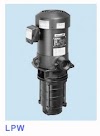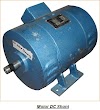The Four Stroke Cycle Spark Ignition (Petrol) Engine
The first successful four-stroke internal-combustion engine was created in 1876 by Nicolaus August Otto, a self-taught German engineer at the Gas-motoreufabrik Deutz factory near Cologne, which was for many years the world's largest maker of internal-combustion engines. Gottlieb Daimler, one of Otto's partners, later invented a petrol-powered engine, which was documented in patent number 4315 in 1885. He was also the first to apply it to a car.
When a charge of petrol is compressed, a combustible combination of air and petrol is drawn in and ignited by a timed spark. As a result, these engines are sometimes referred to as spark-ignition (S.I.) engines.An air-and-fuel intake stroke moving outward from the cylinder head, an inward movement towards the cylinder head compressing the charge, an outward power stroke, and an inward exhaust stroke are required to complete one cycle in these engines.
Induction Stroke
The exhaust valve is closed and the intake valve is opened. The piston moves away from the cylinder head as it lowers. At one-third of the stroke's length, the piston's speed causes a pressure reduction or depression that reaches a maximum of about 0.3 kafe below atmospheric pressure. The actual depression caused will vary depending on the engine's speed and load, but a typical average figure may be 0.12 kafe below atmospheric pressure. This depression causes (sucks in) a fresh charge of air and atomised petrol in proportions of 10 to 17 parts air to one part fuel by weight.A 'normally aspirated' or 'naturally aspirated' engine is one that uses a depression in the cylinder to induce fresh charge.
Compression Stroke
The inlet and exhaust valves are both closed. As the piston approaches the cylinder head, it begins to ascent. At the piston's innermost position, the induced air-and-petrol charge is gradually compressed to around one-eighth to one-tenth of the cylinder's original volume. This compression squeezes the air and atomised-petrol molecules closer together, increasing not only the charge pressure but also the temperature in the cylinder. With the throttle open and the engine running under load, maximum cylinder compression pressures will typically vary between 8 and 14 bar.
Power Stroke
Both the inlet and exhaust valves are closed, and a spark plug ignites the dense combustible charge just as the piston near the peak of its stroke during compression. The charge mixture begins to burn, generates heat, and rapidly raises the pressure in the cylinder until the gas forces exceed the resisting load by the time the piston reaches the innermost point of its stroke. The expanding gases modify the direction of motion of the piston, pushing it to its greatest extreme position. The cylinder pressure reduces from a peak of roughly 60 kafe under full load to about 4 kafe near the piston's outermost movement.
Exhaust Stroke
The inlet valve remains closed at the completion of the power stroke, but the exhaust valve is opened. The piston now advances from the outermost to the innermost position, changing its direction of motion. The majority of the burned gases will be expelled by the gas's existing pressure energy, but the returning piston will drive the remaining of the spent gases out of the cylinder and into the atmosphere through the exhaust-valve port.
As the piston approaches the cylinder head during the exhaust stroke, the gas pressure in the cylinder falls from the exhaust-valve opening pressure (which can range from 2 to 5 kafe depending on engine speed and throttle-opening position) to air pressure or even less.
Sumber http://keluargasepuh86.blogspot.com












